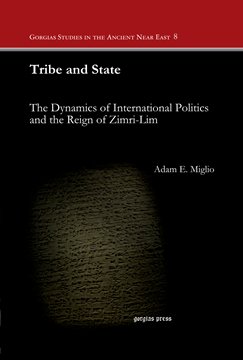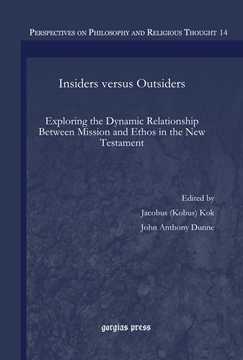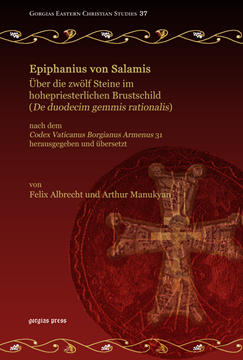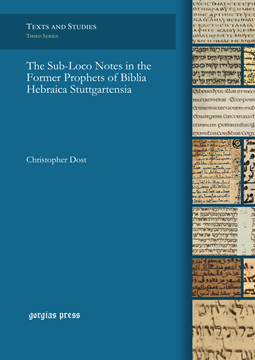Tribe and State
The Dynamics of International Politics and the Reign of Zimri-Lim
Series: Gorgias Studies in the Ancient Near East 8
ISBN: 978-1-4632-0249-1
This book analyzes Zimri-Lim’s interactions with sovereigns from the Habur and with Yamut-bal and Numha tribal polities. It describes how Zimri-Lim’s disproportionate dependence on tribal connections left him vulnerable when these alliances began to falter in his tenth regnal year.
$154.00 (USD) $92.40 (USD)
A Smyrneika Lexicon
The Language of Smyrna (Izmir, Turkey) Explained and Illustrated
ISBN: 978-1-4632-0251-4
A lexicon of Smyrneika, the Greek dialect that functioned as a lingua franca amongst the Levantine merchant communities of the Mediterranean. Rediscovering Turkey’s Ottoman past, including lost minority cultures… a study by three amateur lexicographers. The vocabulary is followed by a collection of proverbs and a series of dialogues illustrating the language and customs … “ Peter Mackridge www.oxford.academia.edu/PeterMackridge
$176.00 (USD) $105.60 (USD)
Insiders versus Outsiders
Exploring the Dynamic Relationship Between Mission and Ethos in the New Testament
Edited by Jacobus Kok & John Anthony Dunne
ISBN: 978-1-4632-0257-6
Christianity as a movement developed within the already established, but volatile Jewish movement/religion, expressing a profound sense of inclusivism illustrated in the transcendence of social boundaries. In this book the dynamic reality of creating and transcending boundaries and the relationship between insiders and outsiders are explored by way of reflecting on mission and ethos.
$158.00 (USD) $94.80 (USD)
Epiphanius von Salamis, Über die zwölf Steine im hohepriesterlichen Brustschild (De duodecim gemmis
nach dem Codex Vaticanus Borgianus Armenus 31 herausgegeben und übersetzt
Series: Gorgias Eastern Christian Studies 37
ISBN: 978-1-4632-0279-8
At the request of Diodorus, bishop of Tyre, Epiphanius of Salamis produced this exegetical treatise on the gemstones in the High Priest's breastplate. The oldest Christian work on gemstones, the the author deals with the stones according to their appearance and their medical benefit as well as their attribution to the twelve tribes based on Christian exegesis. Only extracts of this work are preserved in Greek. This volume provides the important – but hereto unconsidered – Armenian text with a German translation and commentarial annotations, as well as an English introduction.
$120.00 (USD) $72.00 (USD)
Who is afraid of the rhētōr?
An analysis and exegesis of Socrates and Gorgias' conversation in Plato's Gorgias
ISBN: 978-1-4632-0258-3
This book concentrates on the conversation between Socrates and Gorgias which takes place in the first part of Plato's Gorgias. Scholars have tended to concentrate on the following two conversations held by Socrates with Polus and, especially, with Callicles. This first, relatively short, conversation is usually taken to be a kind of preface coming before Plato's 'real' philosophy. The present study challenges this assumption, arguing that the conversation between Socrates and Gorgias actually anticipates the message of the whole dialogue, which concerns the essence of rhetoric and its implications.
$169.00 (USD) $101.40 (USD)
The Sub-Loco Notes in the Former Prophets of Biblia Hebraica Stuttgartensia
Series: Texts and Studies (Third Series) 12
ISBN: 978-1-4632-0531-7
In BHS’s Masoretic apparatus, certain Masorah parva notes are marked “sub loco” in order to refer the reader to the corresponding commentary that was to be found in the third volume of Massorah Gedolah. Due to Weil’s passing, however, this commentary was never realized. This volume builds on Mynatt’s 1994 analysis and classification of the Pentateuch’s 297 sub loco notes by incorporating the Aleppo and Cairo Codices. Dost evaluates all 451 sub loco notes in the corpus of the Former Prophets, and evaluates Weil’s contribution by comparing Weil's revision of the Leningrad Codex’s Masorah against the Masorah of the Aleppo Codex.
$195.00 (USD) $117.00 (USD)




